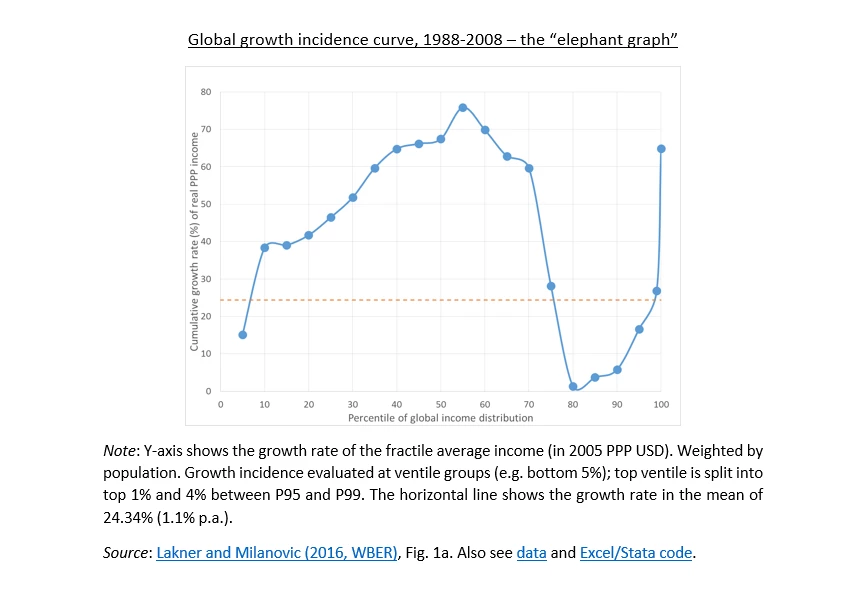Recently, a discussion erupted over our paper and the so-called “elephant graph”. This graph (reproduced below) is the anonymous growth incidence curve, which shows how each percentile of the global income distribution has grown between 1988 and 2008. The discussion was sparked by a report by the Resolution Foundation’s Adam Corlett. Whether or not this was Corlett’s intention, some commentators have used his results to (erroneously) claim that our empirical results are not robust and/or that the policy implications drawn from our research are unwarranted – for example, see this Financial Times article.
Interested readers should take a look at our detailed response – we have also written a letter to the FT’s editor. Furthermore, there have been a number of accurate and excellent discussions in the media – for example, the Economist, another article in the Financial Times, Tages-Anzeiger [in German].
It is important to be clear on two points in this blog: First, many of Corlett’s substantive points are already addressed in our original paper. Most importantly, the non-anonymous growth incidence curve, which addresses Corlett’s compositional and demographic points, was already included in our paper (Fig. 5) and discussed in our VoxEU.org blog. Or as the Economist writes “the Resolution Foundation’s critique added little to the original academic papers (except a reason to go back and read them)”.
Second, some commentators have suggested that we have singled out globalization as the only explanation for the observed difference in income growth rates of the middle classes in the emerging Asian countries (high) and in mature economies (low). In fact, our paper does not provide any causal interpretation. We do agree with Corlett that national policies are hugely important both pro-actively and in mitigating the effects of globalization (for example see the excellent discussion in Atkinson’s “Inequality – What can be done?”). But when analyzing the global income distribution, and in particular the large differences in middle class income growth rates between Asia and the West, one cannot ignore factors like globalization, convergence or technological change.
Source: Lakner and Milanovic (2016, WBER), Fig. 1a. Also see data and Excel/Stata code.




Join the Conversation